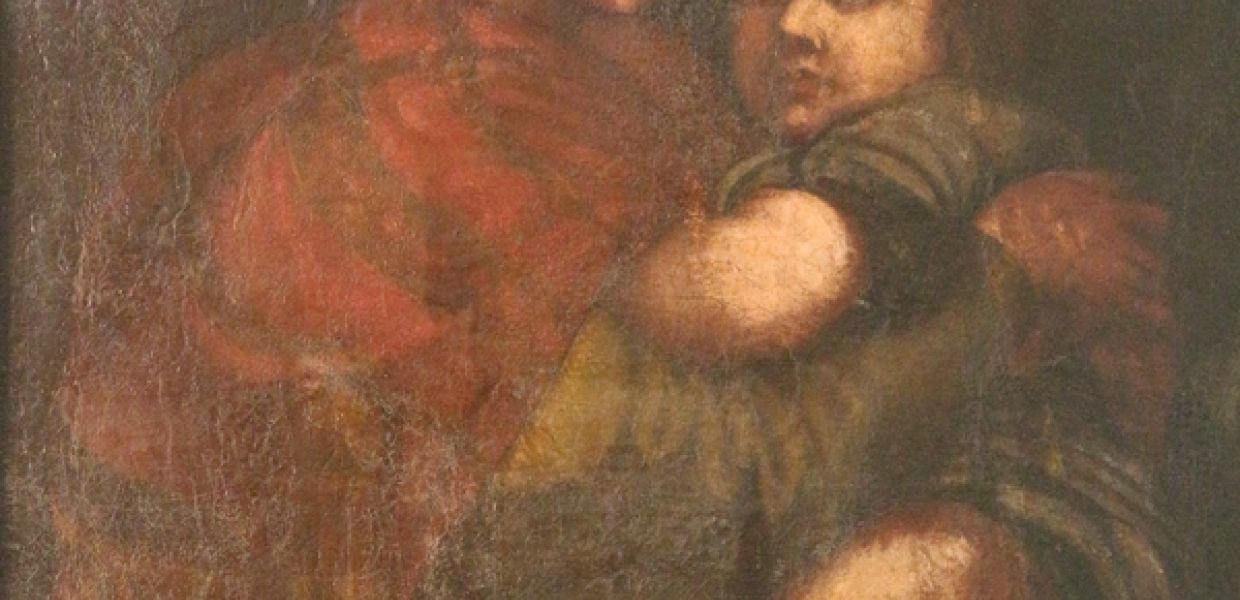Choosing a country's artworks for Europeana 280: Cyprus

During March, we started highlighting some of the treasures nominated as part of Europeana 280 in preparation for the launch of the campaign in April. Daily Art fans enjoyed weekly artworks from the nominations, while different countries were showcased each week on Europeana Art History Collections.
We also continued this weekly blog series, finding out some of the backstories behind selections. This week, Europeana 280’s Exhibition Coordinator Ann Maher chats to Cyprus about their fascinating nominations.
The timeline in which Western art history is usually framed, where the Renaissance is followed by the enlightenment and a progression of other intellectual movements, does not apply to the island of Cyprus or indeed to some other countries in Europe.
It presented a challenge for selectors choosing works for the Europeana 280 campaign as Louli Michaelidou from Cyprus' Ministry of Education & Culture, Culture Department - Visual Arts, explained.
“Artistic production in countries of the so-called ‘western periphery’, like Cyprus, instead developed what critical writers like to call an ‘alternative modernity’. While deeply influenced by mainstream modern art movements – especially since many artists, at least in the case of Cyprus, were trained in western institutions – these artistic influences may have appeared much later, in modified forms, and as part of specific individual expressions rather than as parallel to the main western centres of art. It constitutes a significant critical point for contemporary art criticism.”
So how did Cyprus make its final selection?
Nominations come from the archive of the State Gallery of Cypriot Contemporary Art. “Historically, what can be classified as secular art here begins to appear and circulate from the end of the 19th century onwards,” explains Michaelidou.
Vassilis Michaelides (1849-1917) is considered the national poet of Cyprus and also the first Cypriot, based on available historical data, who attempted to study fine arts. He spent time in Naples and possibly elsewhere in Italy, and the ideals of classicism were an influence in his painting Madonna and Child - one of Europeana 280 nominations from the State Gallery of Cypriot Contemporary Art.

Madonna and Child (1875-1880), Vassilis Michaelides. Image: Cyprus Ministry for Education and Culture, CC0. In 1875, Michaelides spent time studying painting in Naples and Rome - a legacy which is visible in this work.
Rural traditions
At the start of the 20th century, Cypriot society was still predominantly rural and deeply traditional. But artists were beginning to follow European developments and combine their knowledge of those trends with local Cypriot life.
In his work, Return to the Village (1930), Ioannis Kissonergis sought to pass on to future generations some charming aspects of a way of life that had now passed as well as his experience as a painter: “He played a key role in fostering artistic education by reforming the teaching method of art and bringing students in contact with European painting”, according to the State Gallery. Other artists reflecting rural traditions in their work were Telemachus Kanthos and Adamantios Diamantis, the ‘two pillars’ on which modern Cypriot art was built. The Planters by Diamantis is one of his most famous paintings of the Greek Cypriot peasantry. Ordinary people, especially women, are fixed in time and place and become as one with the landscape.
The favourite subject for Telemachus Kanthos was the hills surrounding his village that he depicted in expressive ways in combination with other demanding artistic forms like wood engraving. These two artists, along with another selection from Pol. Georgiou, captured the colourful and turbulent history of Cyprus in the twentieth century leading up to independence in 1960, and were very influential on succeeding generations of artists in Cyprus.
Post-independence
The abstractionist Stelios Votsis is representative of the generation of Cypriot artists who came to the fore in the period after the declaration of independence of the Republic of Cyprus. He studied in post-war England at the Slade School of Fine Art and after graduating, returned to the island to co-found the Cyprus Chamber of Fine Arts. He was one of six artists representing Cyprus at the 1968 Venice Biennale.
Another representative was the charismatic Christoforus Savva. After fighting in the Second World War, he enrolled at St Martin’s School of Art in London and, after time in Paris, returned to Cyprus for good in 1959. The nomination Stymphalian Birds (1960) is inspired by the sixth labour of Hercules. After succeeding in clearing out the Augean Stables, his next task was to drive away an enormous flock of (possibly man-eating) birds gathered near the town of Stymphalos. Despite his short time in the visual arts of Cyprus (he died young in his forties), Christoforos Savva was a catalyst in the gradual intermingling of Cypriot art into the global art scene.
We look forward to appreciating more art selected for the Europeana 280 campaign soon. In the meantime, follow the conversation on Twitter via #Europeana280.
